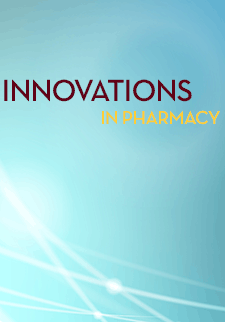A Cross-Sectional Study Evaluating the Impact of One Year versus Two Years of Exposure to Interprofessional Education on Student Perceptions of Physician-Pharmacist Interprofessional Clinical Education (SPICE)
Melissa E Rotz
Temple University School of Pharmacy
Anisha B. Grover
University of the Sciences
Amanda Burden
Cooper Medical School of Rowan University
Laura Pontiggia
University of the Sciences
Gladys G. Dueñas
University of the Sciences
DOI: https://doi.org/10.24926/iip.v7i3.456
Keywords: interprofessional education, perceptions, SPICE, assessment
Abstract
Background: Evaluating student perceptions of interprofessional education (IPE) is important to meet accreditation standards. The objective of this study was to evaluate the impact of one year versus two years of exposure to IPE on student perceptions, as well as evaluate differences between professions.
Methods: In this cross-sectional study, first and second year medical and pharmacy students enrolled in an interprofessional experiential course series at each of their respective institutions completed a perceptions instrument prior to a standardized objective behavioral assessment. Student demographics and perception scores were summarized using descriptive statistics. Chi-squared tests and Cochran-Mantel-Haenszel tests were used to assess differences in demographic variables. Between-group differences in perception scores were assessed using Wilcoxon Rank-Sum tests.
Results: 155 students completed the instrument out of the 163 students enrolled in the course series. Overall, the median scores were ≥4 (4=Agree, 5=Strongly Agree) for all SPICE items and factors. No significant differences were observed between first and second year students in response to any of the SPICE items or factors. When comparing professions, significant differences were observed between pharmacy students and medical students that IPE “enhances my education” (p=0.003), “improves patient satisfaction” (p=0.001), and “enhances my future ability to collaborate” (p=0.001). Significant differences were also observed between pharmacy students and medical students for 2 of the 3 factors: teamwork (p=0.001) and patient outcomes (p=0.005). For all of the differences in items and factors, pharmacy students reported higher levels of agreement.
Conclusions: Two years of exposure to IPE compared to one year (i.e. second year students vs. first year students) did not result in higher levels of agreement; however, agreement was high across all students which may have limited the ability to detect a difference. When perceptions are high early in the curriculum, maintaining the same level of agreement longitudinally may be a more appropriate educational outcome. Pharmacy students had higher levels of agreement compared to medical students for certain items. Further research is needed to determine if these differences have an impact on interprofessional collaboration.
Conflict of InterestWe declare no conflicts of interest or financial interests that the authors or members of their immediate families have in any product or service discussed in the manuscript, including grants (pending or received), employment, gifts, stock holdings or options, honoraria, consultancies, expert testimony, patents and royalties.
Type: Original Research


